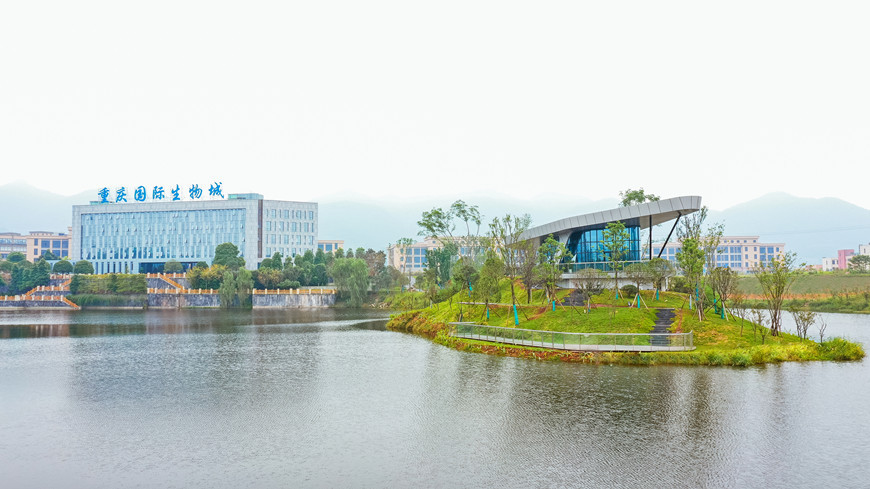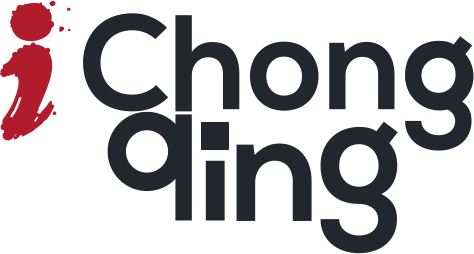Chongqing International Biological City, located in Mudong Township, Banan District, is a key biopharmaceutical gathering area in the unified planning of Chongqing, an important carrier for the development of biopharmaceutical industry in the city, an expansion park of Chongqing High-tech Industrial Development Zone, and one of the first national strategic emerging industry clusters. With the development orientation of building an internationally influential bio-city in the upper reaches of the Yangtze River, it will build a demonstration zone for global biopharmaceutical industry cooperation, a cluster for the research achievement commercialization and innovation of China's biopharmaceutical industry, a national biopharmaceutical industrialization base, and a national pilot zone for the integrated development of the healthcare industry.

Chongqing International Biological City (photo/The Publicity Department of Ba'nan District)
Superior geographical location Chongqing International Biological City, located in the south of the Yangtze River and east of Mingyue Mountain in the east of the main city of Chongqing, is the largest industrial expansion space in downtown Chongqing. Separated by the river from Liangjiang New Area and the mountain from Chongqing Economic and Technological Development Zone, the bio-city boasts very prominent advantages in geographical location. As the only remaining area in the downtown area that is suitable for the centralized, contiguous layout of the city's pharmaceutical industry, it has unique advantages of space and environmental capacity for the layout of the full industrial chain of the pharmaceutical industry.
Fast and convenient transport The Inner Ring Expressway, Chongqing Ring Expressway, Chongqing-Guizhou Expressway, Chongqing-Hunan Expressway, and Chongqing River Expressway converge in the district to form an expressway network, and more than 60 kilometers of the golden waterway of the Yangtze River runs here.
Reasonable functional layout Covering an overall planning area of about 35 square kilometers, it aims to build an internationally influential bio-city in the upper reaches of the Yangtze River with the layout of one city, one axis, and one belt according to the international, green, intelligent and human culture standards. Relying on the two islands of the Yangtze River and the ancient town of Mudong, the riverside international bio-city will be built with the integration of industry and city. Combining with the natural ecological background of the Wubu River, such as the mountain, river, forest, and lake, the Wubu River ecological innovation axis will be built with the layout of sci-tech innovation enterprises and research institutes. An urban landscape belt along the Yangtze River will be built to show the beautiful scenery of the Mingyue Gorge, the island in the center of the river, the ancient town, and the new town.

Chongqing International Biological City (photo/The Publicity Department of Ba'nan District)
Sound industrial system With the "1+3+N" state-level strategic emerging biopharmaceutical industry cluster as the core, it will focus on the development of such industries as biopharmaceutical, chemical-pharmaceutical preparations, modern Chinese medicine, and medical devices to build the high-quality healthcare industry integrating medical care, healthcare, fitness, management, and tourism.
Leading innovation capacity With Chongqing International Institute for Immunology as the carrier, the bio-city will be built into a domestic first-class and internationally influential platform for basic research and industrialization. Based on top universities, institutes, and other industry-university-research platforms, the bio-city will build a domestic leading innovation chain of full production factors covering basic research, applied research, product development, and research achievement commercialization to form a pattern of strong innovation capacity and industrialization capacity. At present, production factor platforms have been built for pilot production, animal experiments, consistency evaluation, inspection, and testing, an R&D system of five platforms and three centers has been developed, and a number of new drugs such as a homemade 9-valent cervical cancer vaccine, oral paclitaxel, and long-acting insulin have filled the gaps in the city and even China.
Solid industrial foundation Currently, there are more than 80 pharmaceutical projects with an agreed investment of more than 45 billion yuan (about 7.0 billion U.S. dollars) and an agreed target output value of nearly 100 billion yuan. The leading projects include Zhirui Bio, a domestic leading biopharmaceutical company with an investment of 13 billion yuan, Japanese Santen Pharmaceutical, the world's largest eyedrop company, Athenex, the global cancer drug giant, Bovax Bio, a domestic leading recombinant vaccine company, and Genrix Bio, a leading antibody-drug enterprise in China. The bio-city has preliminarily realized the cluster development of biopharmaceuticals, chemical-pharmaceutical preparations, modern Chinese medicine, and medical devices.
